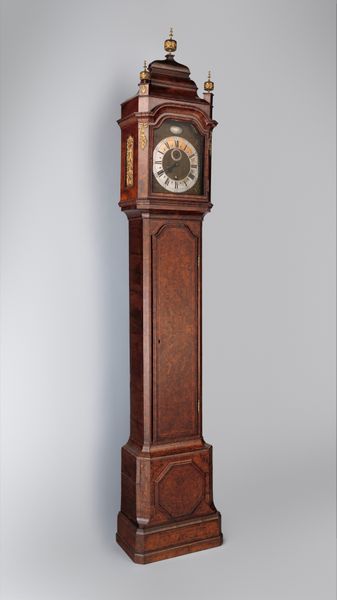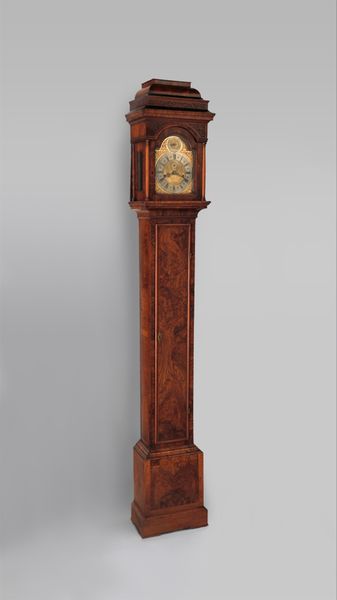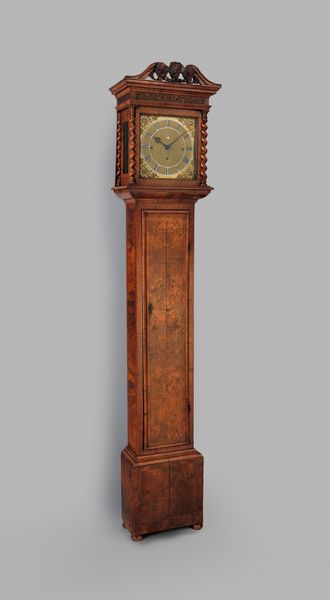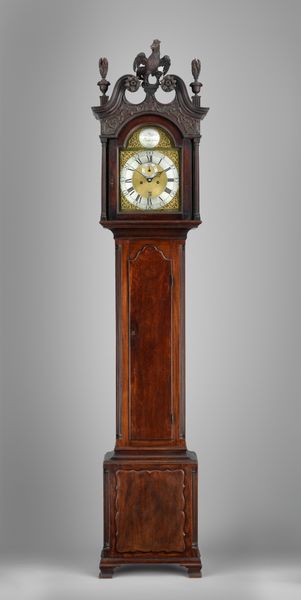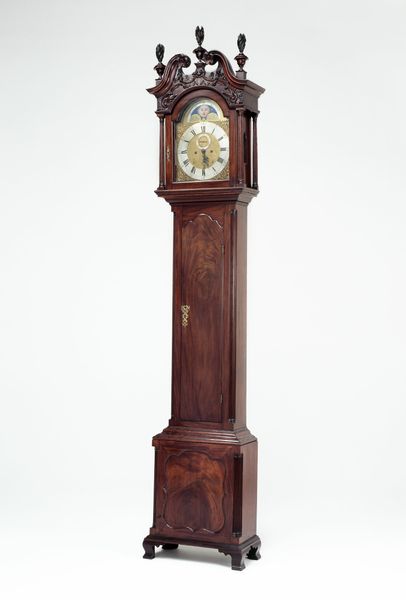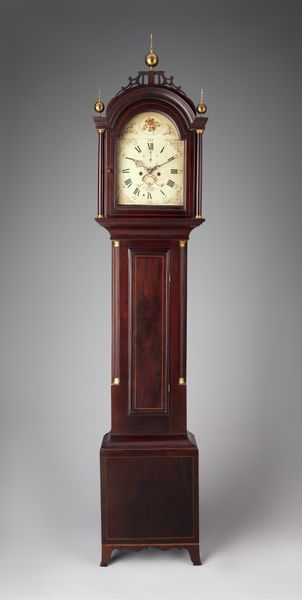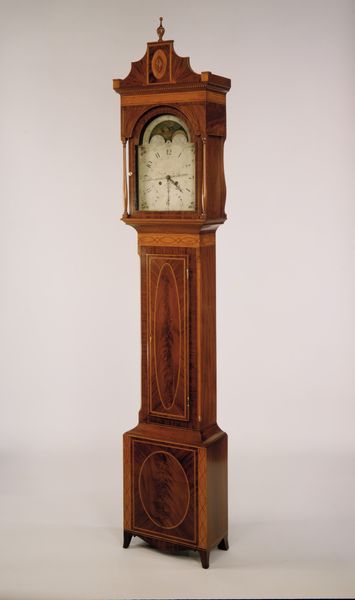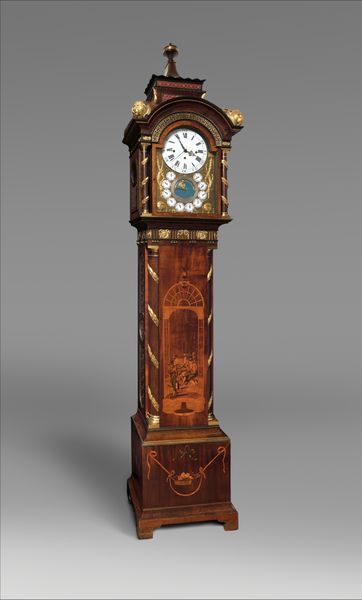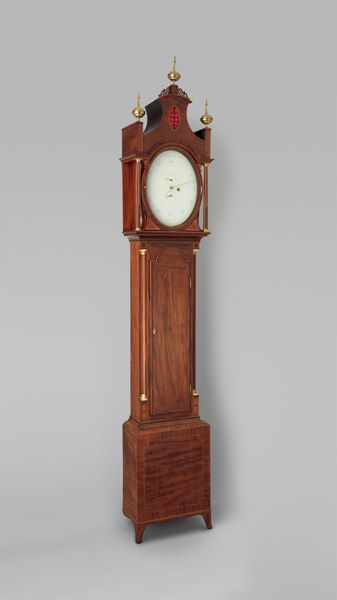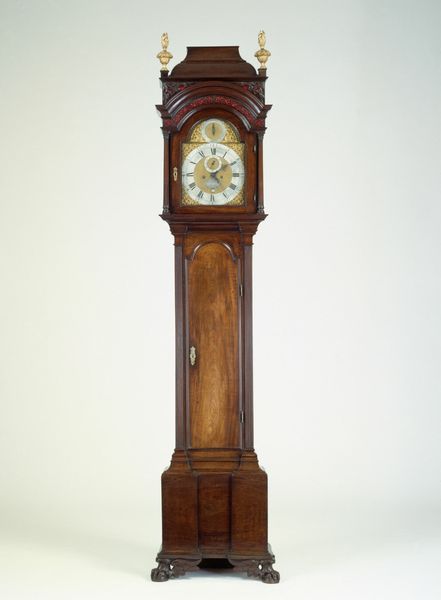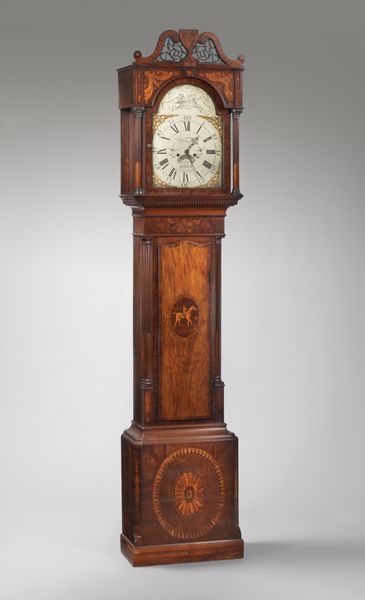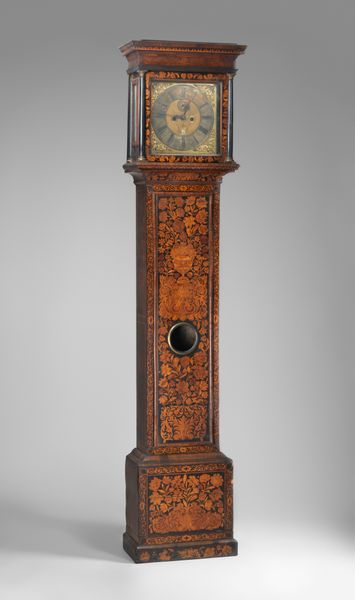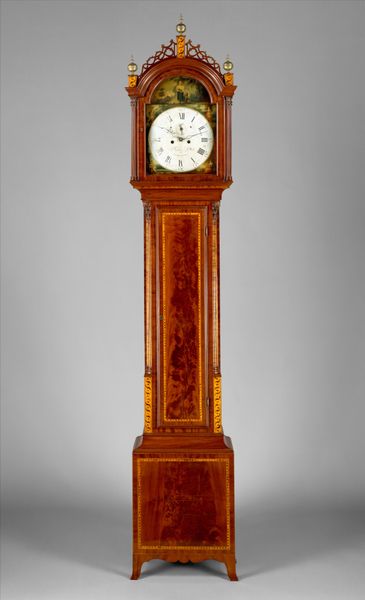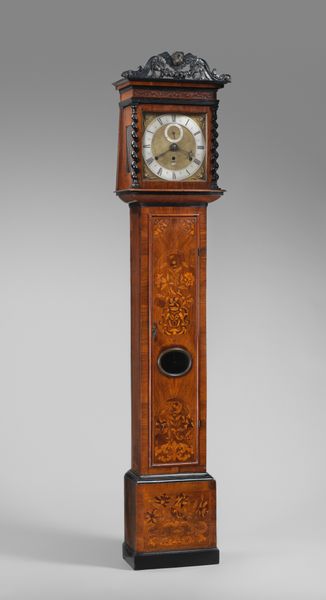
sculpture, wood
#
baroque
#
sculpture
#
wood
#
decorative-art
Dimensions: Overall: 94 × 19 × 10 1/2 in. (238.8 × 48.3 × 26.7 cm)
Copyright: Public Domain
This longcase clock with calendar was made by Thomas Tompion, a leading English clockmaker, sometime before his death in 1713. Tall clocks like this one became popular in the late 17th century, coinciding with advancements in clockmaking that allowed for greater accuracy and the addition of features like the calendar. The clock's visual codes speak to the values of the time, where it was a symbol of wealth and sophistication, displayed prominently in homes. The incorporation of a calendar reflects an increasing interest in scientific observation and timekeeping, driven by the Enlightenment. English society at the time was marked by growing commercial activity and exploration, which demanded precise navigation and scheduling. Institutions like the Royal Society played a key role in promoting scientific knowledge. The clock embodies a progressive attitude toward technology, yet it's also conservative in its display of status. To understand its full significance, we delve into period documents and scientific publications. The meaning of this clock is deeply rooted in its social and institutional context.
Comments
No comments
Be the first to comment and join the conversation on the ultimate creative platform.
